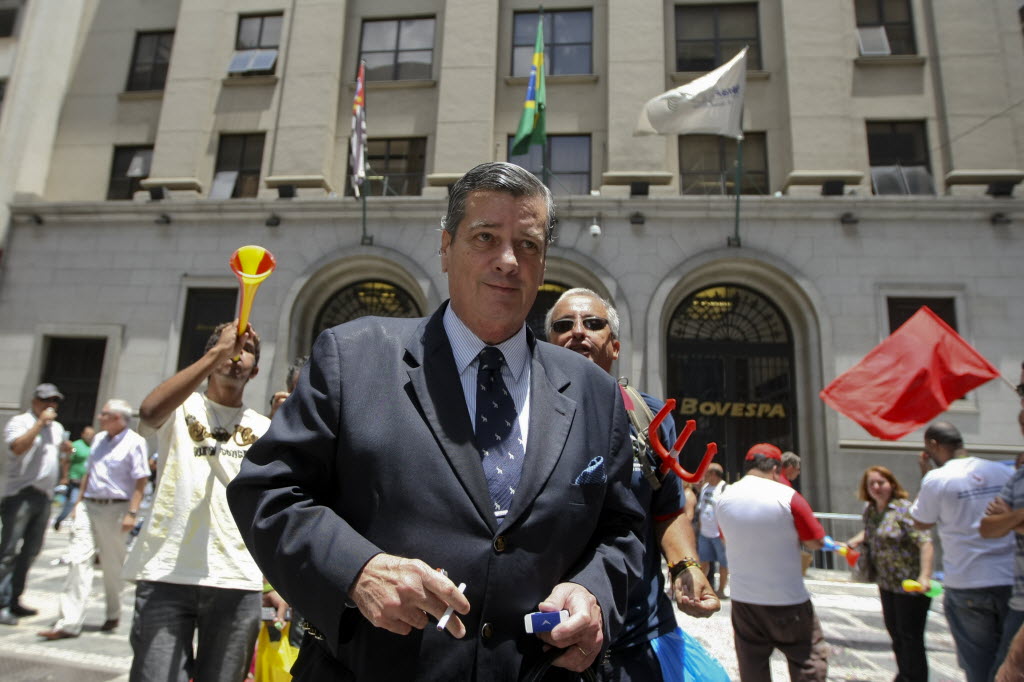If you are reading this blog, it is likely you’ve heard that Brazil has been doing quite well. Over the last decade, the country has powered forward, pulling tens of millions out of poverty, and has just now overtaken the United Kingdom to be the world’s sixth-largest economy.
Why? Why is Brazil chugging along as much of the rest of the world writhes in crisis? Of course the complete answer lies in the complex interactions of 190m people. But let’s not neglect the benefits of oversimplification.
So then, there are two major causes behind the growth: sales of commodities to Asia, and the benefits of fixing the financial system. In the former case, Chinese demand pushed up the prices of Brazilian goods, especially iron ore and soya. In the latter, the domestic economy is ‘catching up’ to where it probably should have been years ago. This was very much the consequence of fixing hyperinflation and creating sound financial regulations.
Building and feeding China
It’s no secret that China has been powering world growth for some time now, and is operating at a completely different level than the US and Europe. So it was quite fortuitous that Brazil slowly began strengthening its trade relationship with China in the twenty-first century, until China eventually overtook Brazil’s traditional trading partner, the US. Countries like Mexico that remain closely tied to the US have had a much different experience over the last few years. Much worse, that is.
China is growing quickly, but it’s a very poor country. So they have seen growing demand for basic things like steel to expand their cities, and for food staples. For Brazil, which has large quantities of high-quality iron ore, and a large, fertile breadbasket to produce soy beans, this has worked out quite well. The shift in focus has been remarkable. Since 2000, Brazilian exports to China have increased by more than forty times.
Of course, this has generated some legitimate concerns that Brazil could be ‘de-industrializing’, and could put itself at risk by concentrating too much on exporting basic goods. But for better or for worse this now powers the country’s international trade. And next, oil will be stepping onto the scene in a big way.
Hyperinflation and return to normality
In the 1980s and 1990s, Brazilian money was not a reliable store of value. Some level of inflation is not always a problem, but here it got completely out of control, at times rising by more than 2,000% a year. This had widespread implications: saving made no sense, credit was basically impossible to acquire for normal people, and only the rich could use complex financial machinations to stay above water.
The struggle to end hyperinflation explains much of the modern political economy of Brazil. To oversimplify again, the return to macroeconomic stability started under the rule of Fernando Henrique Cardoso and was continued under President Lula. It worked, but left Brazil with some of the highest interest rates in the world.
During Lula’s two terms, the belief gradually set in that stability might be here again to stay, leading to an expansion in investments. Then Lehman Brothers fell.
No crisis, more credit
Remarkably, Brazil had basically no financial crisis in 2008. This was because a history of crisis had ensured extremely sound financial regulations. None of the nonsense that was going in New York or London. In the wake of the global crisis, two things happened that made Brazil’s growth appear even more impressive.
First, the Lula government was able to use Banco do Brasil to expand credit in the economy and provide a strong stimulus to avoid recession. Remember the bitter and failed conversations in the US and Europe about ‘trying to get the banks to lend’? Well, Brazil simply controls one of the major banks, so the government just made it happen. (This also proved very profitable for the bank.) And since Brazil already had very low levels of credit in the economy, it could actually healthily expand debt levels while the rest of the world began to ‘deleverage’. This caused a bottom-up consumer boom, of a new middle class being able to buy things like refrigerators, ovens or cars. Yes, they often did so at usurious levels of interest, but that’s how it happened.
Second, interest rates in the US and Europe dropped to zero. Here, they were still sky-high. This meant that lots of capital that could get no returns in the rich countries could be invested here for a profit. So a flood of money came into Brazil. But there are also negative consequences: the Brazilian currency is now extremely over-valued and the country is very expensive. But that’s how it happened, broadly speaking.
Still not rich
Brazil may now be the world’s sixth-largest economy. But it is the world’s 5th largest country by population. There are a lot of people. If you divide GDP per capita, here is where Brazil comes up in the list of the world’s 180 countries:
Source: Imf data for 2011, on Wikipedia, using PPP*
Brazil does a little bit better using nominal prices*, though not much
There is a big difference between growth and wealth. Growth, which China and Brazil have, makes people better off than they were last year, generates returns for investors (both at home and abroad) and often feels nice. Wealth means you have a lot of stuff, but that things can still be rough if you’re in crisis – as is the case now in Europe, despite being almost four times as rich as Brazil.
*(Basically, PPP means what it feels like if you live here, and nominal is how much stuff you can buy on the international market)



